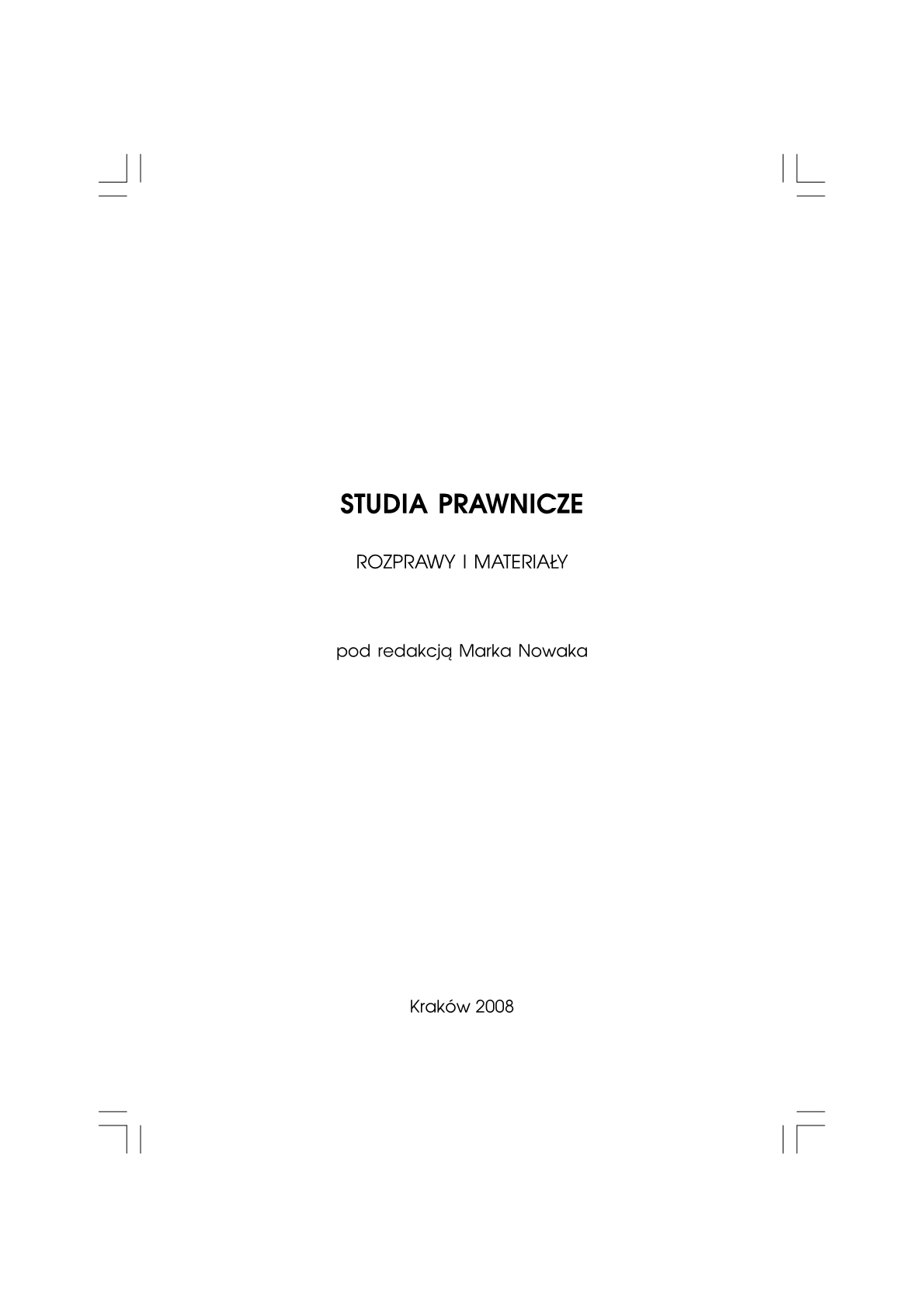
We kindly inform you that, as long as the subject affiliation of our 300.000+ articles is in progress, you might get unsufficient or no results on your third level or second level search. In this case, please broaden your search criteria.

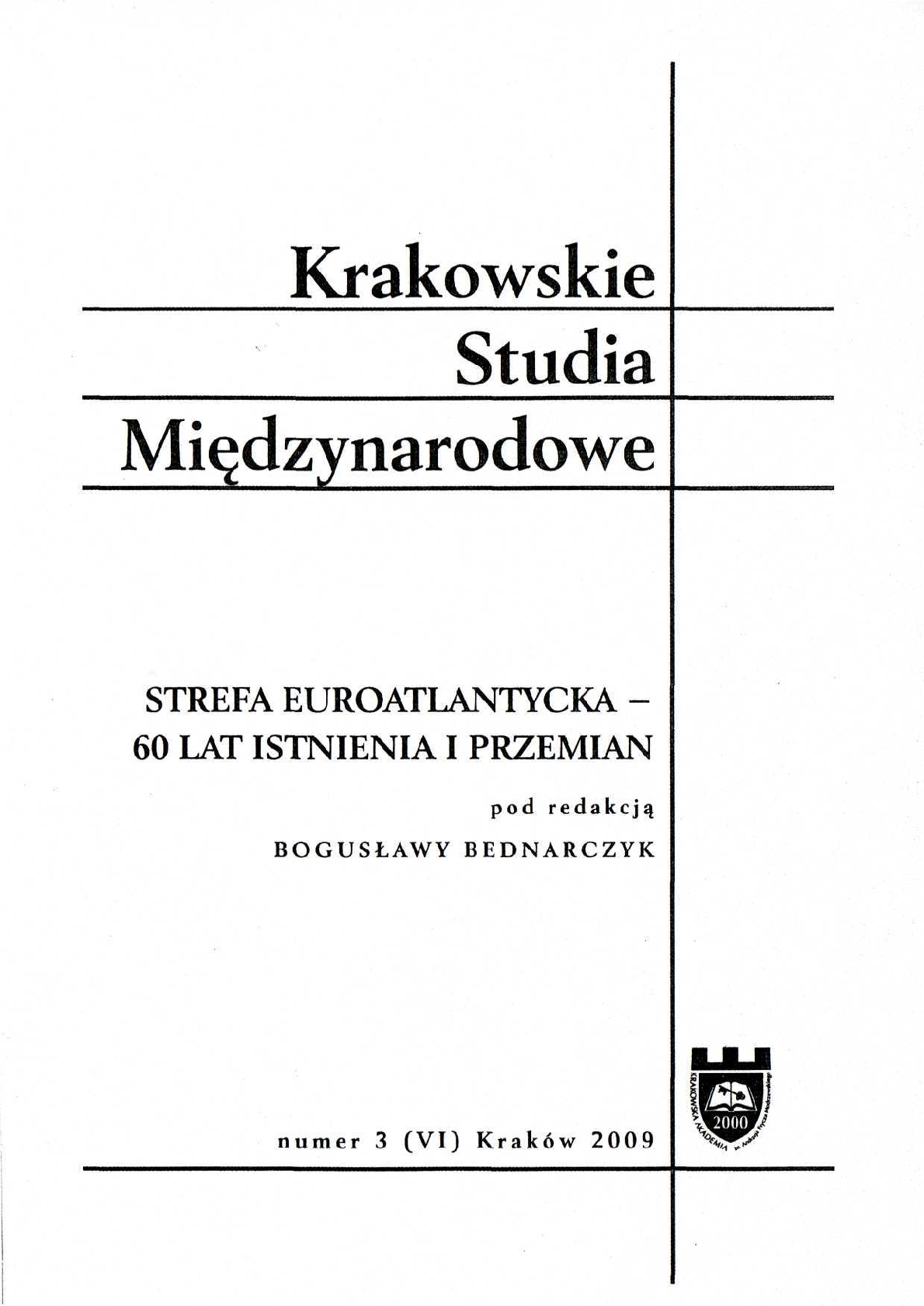
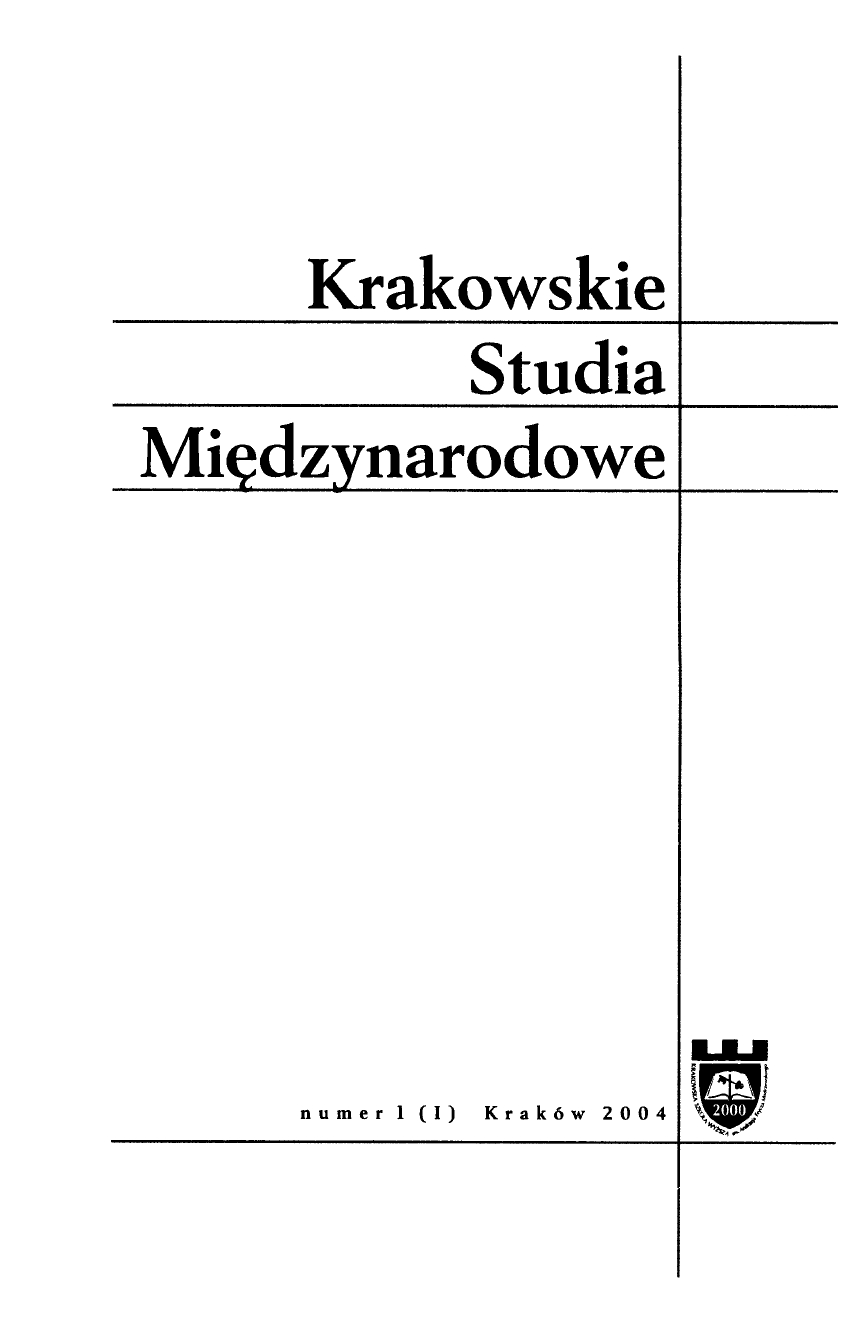


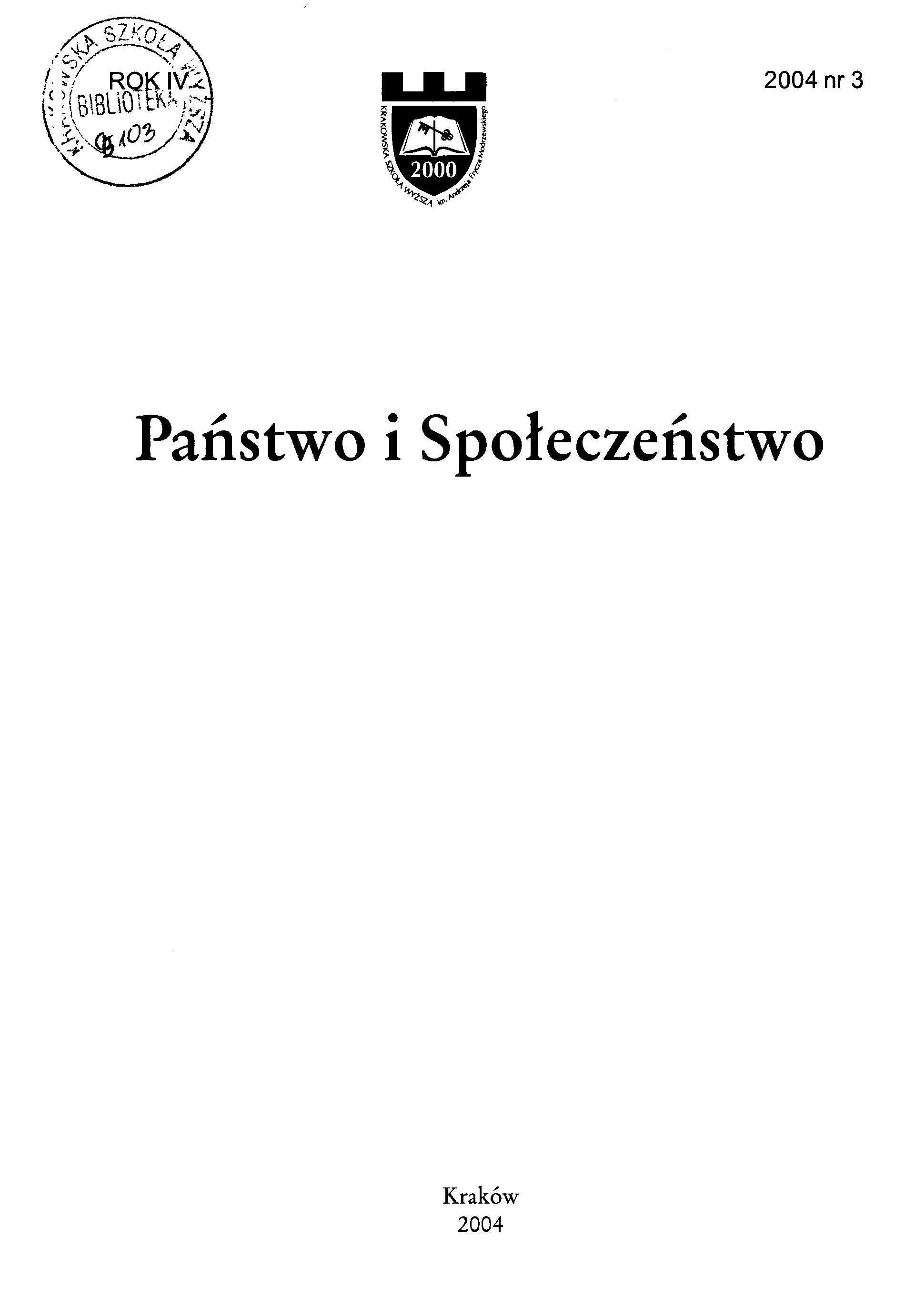
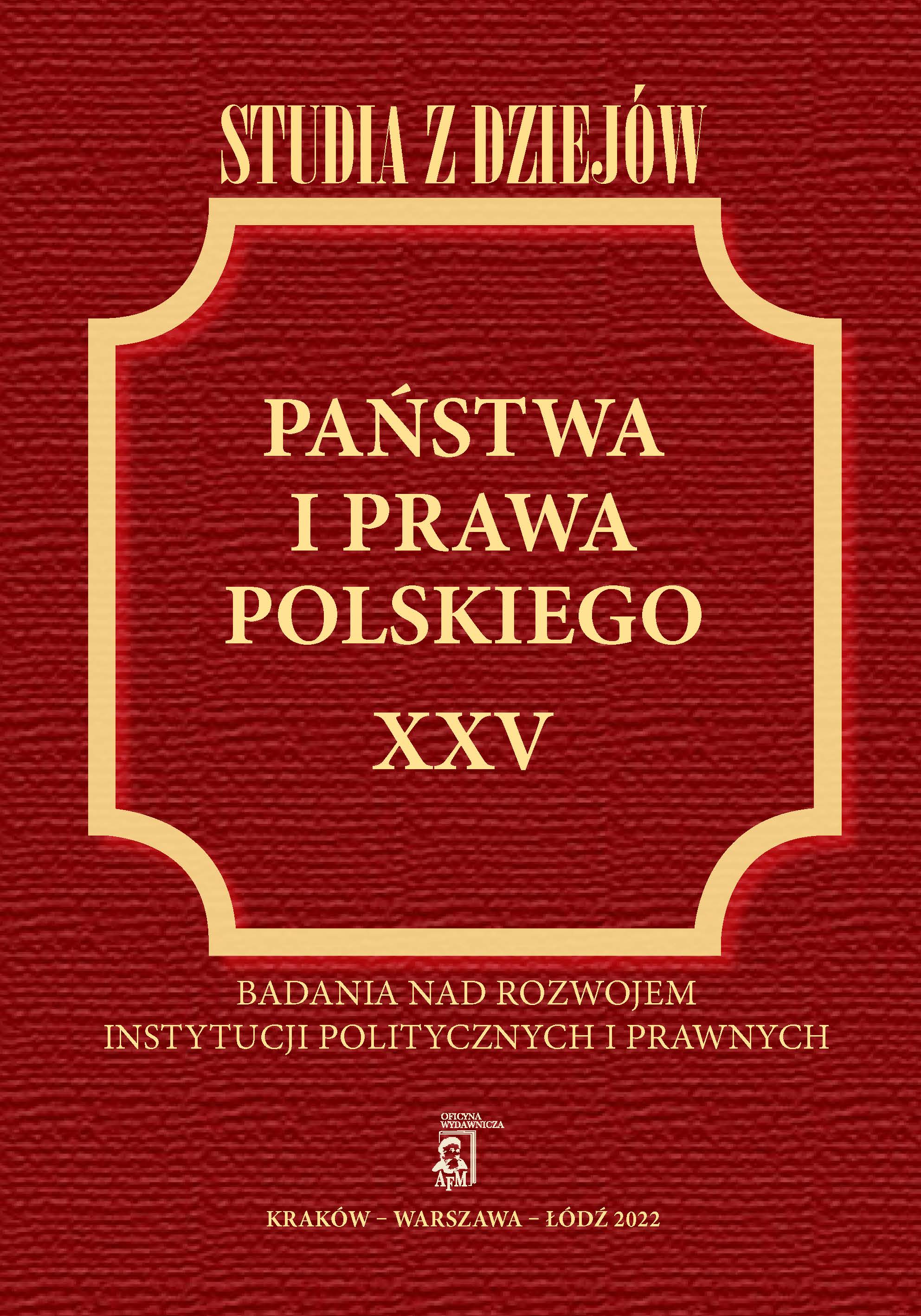
In addition to judicial and economic matters, the activities of the Permanent Council focused on widely understood social policy, namely: student recruitment to the Academy of Medicine in Cracow, the prevention of begging, vagrancy and escape of the peasants from Russia. Furthermore, the Permanent Council was acting in an area of education and issued the universals devoted to raising funds for the Commission of National Education. The actions of the Permanent Council were not always effective, because the local authorities and the nobility did not want to comply with regulations contained in the universals.
More...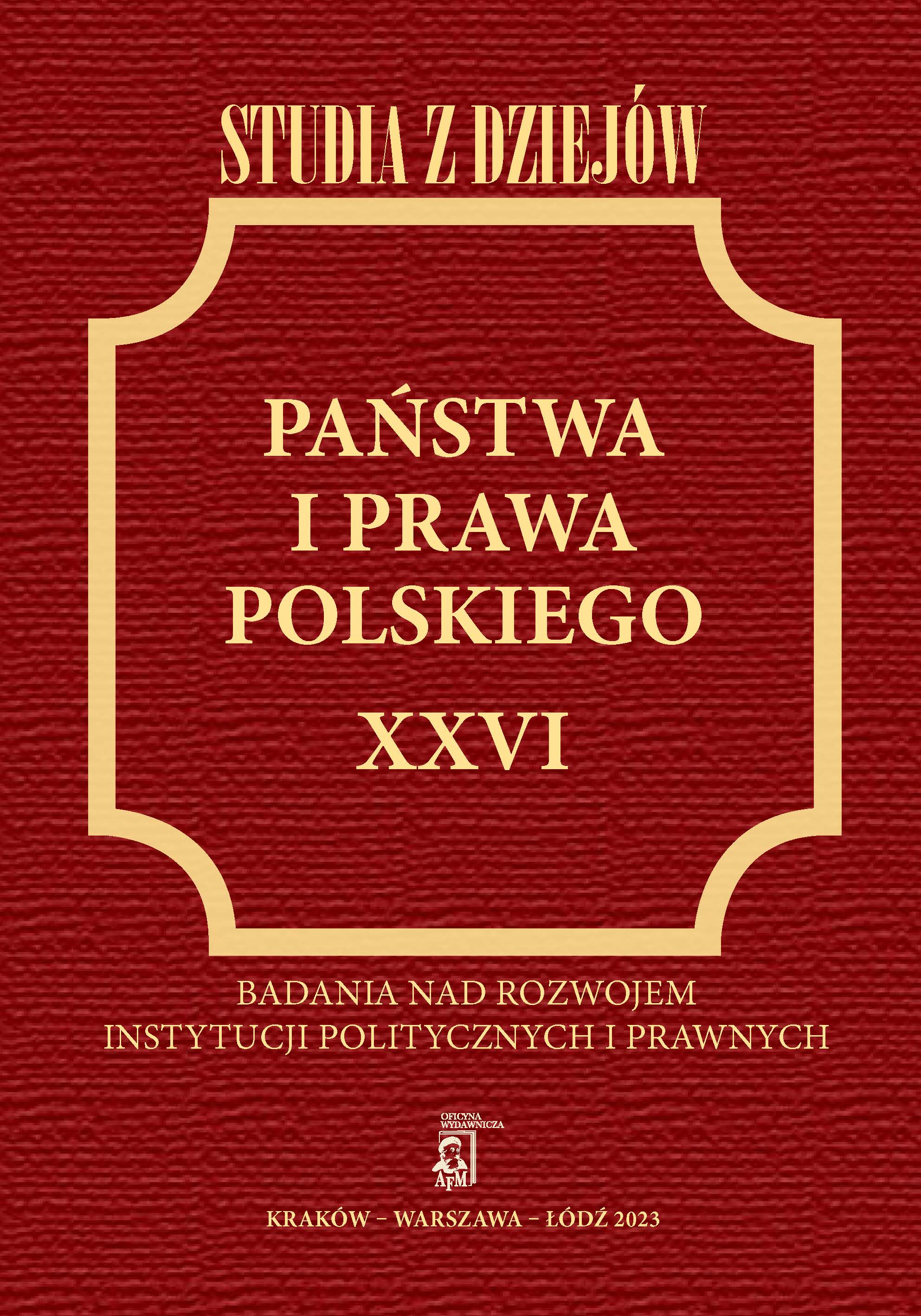
The article analyzes the provisions of the Formula processus iudiciarii from 1523 in the scope in which they constituted the obligation to record the judgments of the border court (iudicium succamerariale) in the records of the land court (iudicium terrestre). The author, relying on the border court judgments found in handwritten records of the noble courts’, presented the application of these provisions in the Łęczyca Palatinate in the 16th century. He then demonstrated that presenting border court documents to the land court in accordance with the Formula processus served the intended purpose of strengthening the connection between border courts and land courts. The impact of the Formula processus on the border procedure in the Łęczyca Palatinate becomes noticeable only in the early 1540s, and the observed practice at that time undergoes no significant changes until the end of the century.
More...
The advocates and advocate’s trainees of Łódź were affiliated with the Bar Council of Warsaw, established in February 1919, which acting on the basis of internal regulations, appointed its representatives in individual localities. According to the sources, the Council’s delegate functioned in Łódź as early as 1925–1926. However, due to the systematic increase in the number of members of the bar in this city, it became necessary to expand the representation, which resulted in the establishment of a collegiate Delegation in 1934. This entity operated on the basis of its elaborate regulations, adopted by the Bar Council on June 25, 1935, which remained in force in almost unchanged form until the outbreak of World War II. Some modifications were made by the Bar Council on January 2, 1937, in connection with the stance of the General Assembly of the Łódź Bar on increasing the number of representative members. With a relatively wide range of competencies, the Łódź Delegation undertook activities in the field of amicable courts, tax matters, among others, and also sought to combat the unlicensed legal services.
More...
Drawing on court records of the post-war trials of Nazi collaborators accused of, among other things, crimes against Jews, this article examines the testimony of Jewish and non-Jewish witnesses and attempts to answer the questions of: first, how representatives of post-war local communities constructed the definition of “collaboration” as a set of morally reprehensible practices, which stigmatized the perpetrators and relegated them outside of the community vis-a-vis other forms of cooperation with the German authorities, which were considered morally neutral, socially harmless and undeserving of penalization; second, what forms of complicity in anti-Jewish violence were revealed in the very process of negotiating the definition of collaboration. Our microstudy focuses on five trials of Nazi collaborators from two former shtetls of the Lublin region, with sizeable Jews populations before the Holocaust: Biłgoraj and Izbica. Analyzing court proceedings under the so-called “August-decree” in the context of other sources, including Yizkor books, memoirs, oral-history interviews and individual interviews with local community members, Holocaust survivors and their descendants, this article probes into the implications that the definition of “collaboration” had for local Holocaust memory.
More...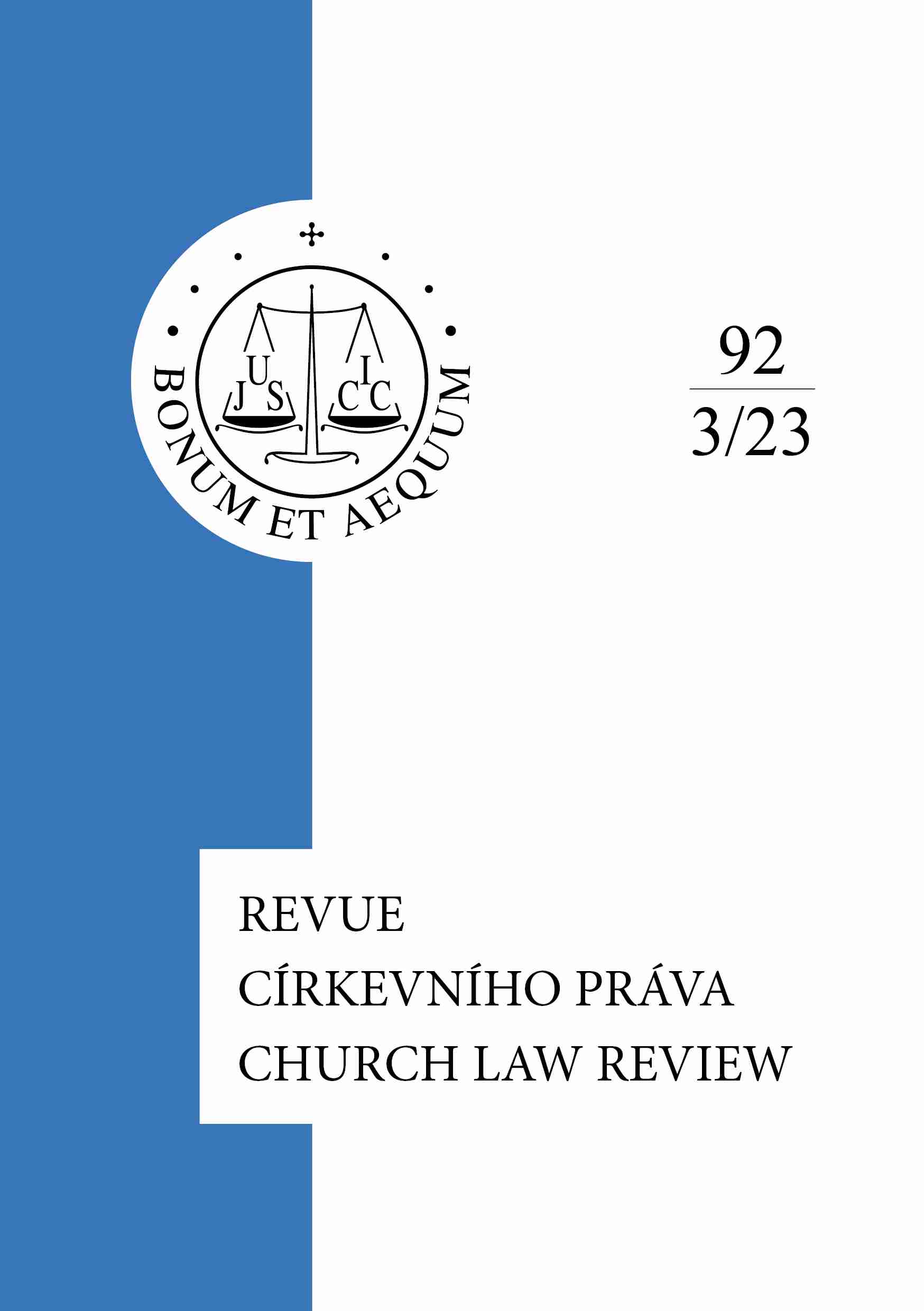
This study is devoted to the legal basis for establishing minor seminaries in the Austrian Empire after 1850, of which their existence was supposed to help the intellectual and spiritual formation of future candidates for entry into priestly seminaries. The legal basis had its roots both in the decisions of the Council of Trent and the subsequent decrees from Rome and in the state legal decisions that resulted from negotiations between the Catholic bishops and the state as a result of the revolutionary events of 1848–1849. Using the example of establishing a minor seminary in the Diocese of Budweis, this study shows the pitfalls of such a decision, reflecting social and economic reality.
More...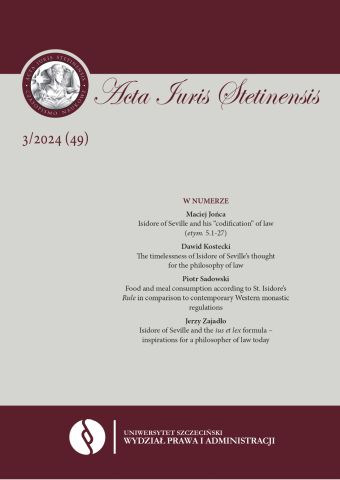
The aim of this article is to present the incredible character of St. Isidore of Seville and his teachings, especially in the context of the subject matter of witnesses in a trial, especially in its juridical and theological meaning. He was regarded as one of the most important scholars of Late Antiquity and the beginnings of Early Middle Ages. In his tireless scholarly and pastoral mission, referring to ancient cultural and scholarly tradition, he propagated the need for constant development of one’s knowledge and reason. He believed that human ignorance is the cause of many earthly and eternal misfortunes. In his treaties, addressed to legislators and rulers, he reminded them about the role of witnesses in a trial and the need to observe the ancient two-witness rule and consistent testimony as a guarantee of justice and truth.
More...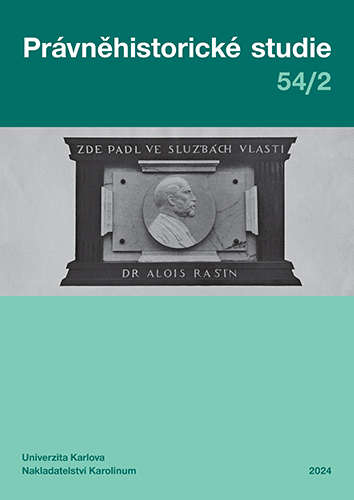
The article concerns the origins of the well-known classification of corporeal and incorporeal things in Roman law, which follows from the development visible in the legal sources from Institutes of Gaius to the codification of the emperor Justinian. The wide range of non-legal sources dealing with the classification, mostly the philosophical works, from authors as Cicero, Seneca, Gellius, or Lactantius, is taken also into account. Two types of the classification based on the corporeality of things arise from all the analyzed texts. The first one uses the terms corporeal and incorporeal thing, but the legal sources, except the Institutes of Gaius and apart the non-legal ones, almost avoid it. The second one divides things with corpus and the ones consisting of rights and it is represented in the text of Ulpianus or Hermogenianus as well as in several post-classical legal sources. Nevertheless, the codification of the emperor Justinian adopts the formulation according to Gaius, whose proximity to the philosophy categories can be observed so the classification of the corporeal and incorporeal things.
More...
The aim of this study is to discuss information on the origins of natural law (ius naturale) in Etymologiae (Etymologiarum sive Originarum libri XX) written by St. Isidore of Seville (d. 636). Such a choice of the subject matter seems reasonable mainly because research on Christian concepts of natural law as a rule places the study of St. Thomas Aquinas’s natural law theory as its focal point. Previous Christian concepts are only briefly touched upon. Meanwhile, they have immense historical significance that have determined the entire Christian reflection on the idea of natural law since as early as the 13th century. The research allows a conclusion that the definition of natural law constructed by St. Isidore of Seville, along with the examples presented in his Etymologiae, is an exceptional creation that has no clear archetype in juridical and non–juridical sources. It quite clearly presents elements taken from Ulpian. However, the very essence of natural law as a normative system, that connects all people (not people and animals) due to their “natural instinct” (instinctus naturae) and that is independent of the will of the positive legislator, remains under a marked influence of the Christian thought.
More...
The international conference "Civil Society on Paper: Construction, Codification, and Implementation of the Concept of Civil Society in the Habsburg Monarchy" took place from October 26-28, 2011, in Villa Lanna, Prague. It was organized to commemorate the 200th anniversary of the Austrian Civil Code of 1811. The event, part of the Czech-Austrian project KID CZ, gathered historians and legal scholars to discuss the societal and legal transformations in Central Europe during the 19th century. The conference focused on the Austrian criminal and civil codes and their impact on family law, child protection, and the integration of legal norms into national languages. Significant attention was given to the abolition of torture, modernization of criminal law, and how these legal frameworks shaped civil society. The discussions highlighted the interaction between law and social change, especially in the context of legal awareness in urban and rural communities.
More...
The exhibition "Bandits – Heroes or Criminals," held at Musaion in 2011-2012, explored the social and cultural dimensions of banditry in the 18th and 19th centuries. Banditry, unlike common robbery, was often seen as a legitimate form of resistance against oppressive authorities, gaining acceptance from local rural populations. The exhibition highlighted the dual nature of bandits, seen both as outlaws and as folk heroes who protected the poor. Notable figures like Jan Karásek, Johann Georg Grasel, and Václav Babinský were featured. Visitors were introduced to artifacts from bandit life, including weapons, clothing, and reconstructions of bandit hideouts. The exhibition also explored the legends surrounding famous bandits, such as Jánošík, Ondráš, and Oleksa Dovbuš, focusing on motifs like superhuman strength and betrayal. Additionally, it examined how bandit culture influenced folk art, literature, and film.
More...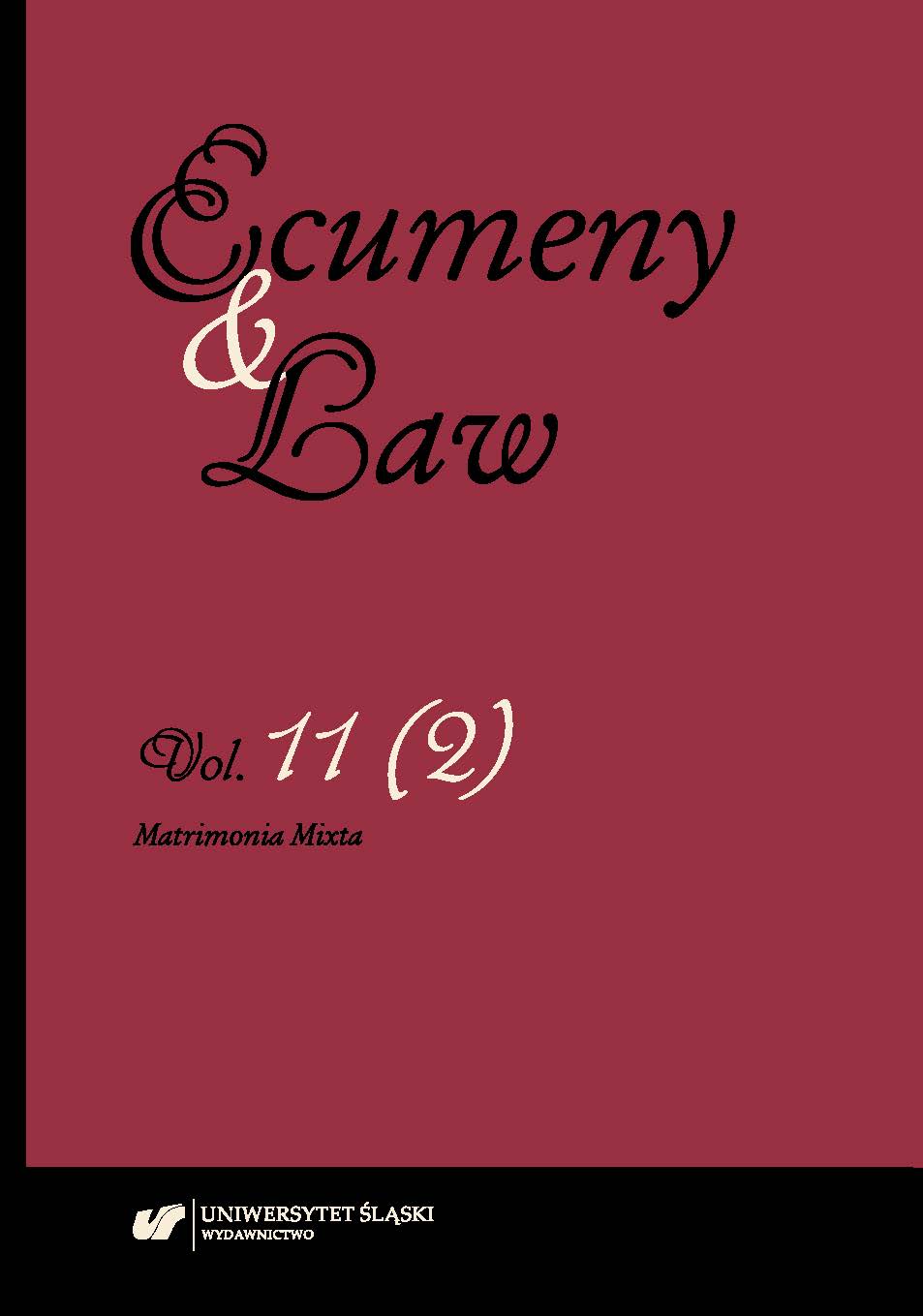
The marriage, one of the ancient institutions of mankind, was initially regulated by divine law (both natural and positive), hence its religious character, that also can be found in the Roman marriage known as the confarreatio marriage. According to the provisions of the ius civile, a man and a woman enter into a marriage through a contract. But, by an imperial constitution promulgated by the Emperor Justinian, only the civil marriage contracted by a written contract in a Church is a iustas nuptias (‘legal marriage’) (cf. Novel 74). The marriage as institution — provided by ius civile — has evolved into the sacramental act of marriage when it was raised to the rank of a Holy Sacrament of the Church by our Savior, Jesus Christ, at Cana of Galilee (cf. John 2:1—11). And, from apostolic age, the Holy Sacrament (Mistyrion) of Marriage has been accompanied by the administration and reception of the Holy Eucharist by the groom and the bride, that is, by the man and the woman. And, this sacramental act of marriage was regulated by church law, that is the canon law of the Eastern and Western Churches (cf. can. 3 Trullan Council). From the year 893 the subjects of the Byzantine emperor had to receive the Sacrament of Marriage after they were contracted the civil marriage (cf. Novel 89 of Emperor Leo the Wise). Only in this way a marriage could be bearer of legal effects.
More...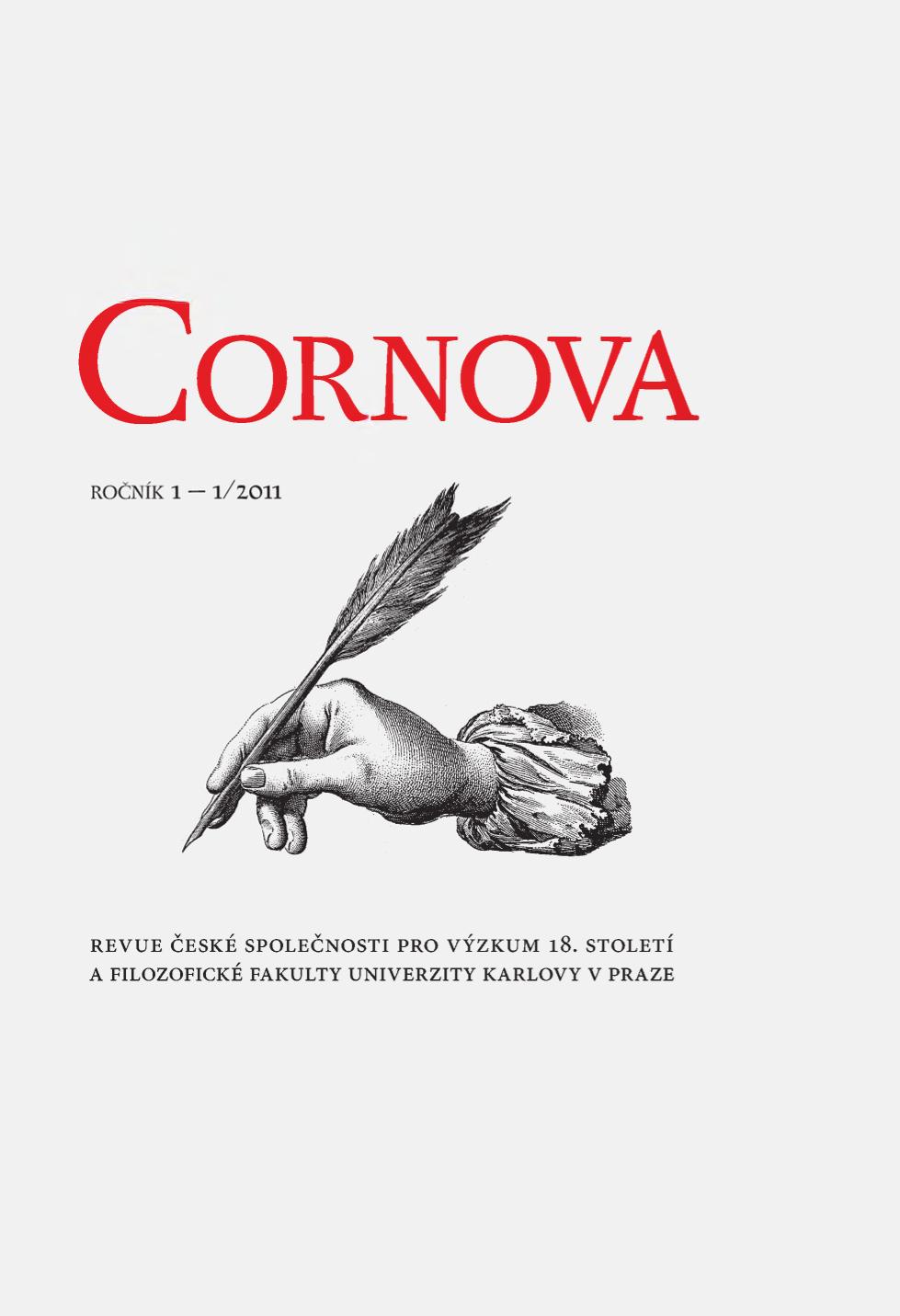
Review of: Stoklásková, Zdeňka. Cizincem na Moravě: zákonodárství a praxe pro cizince na Moravě 1750-1867. 1. edition. Brno: Matice moravská, 2007. 328 p. Knižnice Matice moravské; vol. 22. ISBN 978-80-86488-45-5.
More...
The main goal of the presented study is to present the implementation of the lex Perek in the context of the national struggle for compulsory schooling in the example of Moravian cities, which in historical memory have become a symbol of the Czech–German ethnic confl ict. At the regional level, the Moravian Compromise, concluded in 1905, contained four provincial laws for the most pressing areas of friction and supposed to blunt the edges of Czech–German confl ict tensions. One of these was the lex Perek, which, in addition to the division of school authorities on the basis of nationality, introduced in § 20 the principle that a child should generally attend a school in whose language of instruction it was profi cient. On the basis of primary and secondary sources (contemporary Czech and German press, records of meetings of the regional assembly, fi les of the regional school board, decrees of the Supreme Administrative Court), the study analyses and interprets conditions in Brno, Olomouc, Moravská Ostrava, Vítkovice and Znojmo through the lens of Czech national activists. It covers the development from the mid-seventies of the nineteenth century after the issuance of the lex Perek and then demonstrates in specifi c cities that the struggle for a child in the cities under study did not end with the implementation of the law.
More...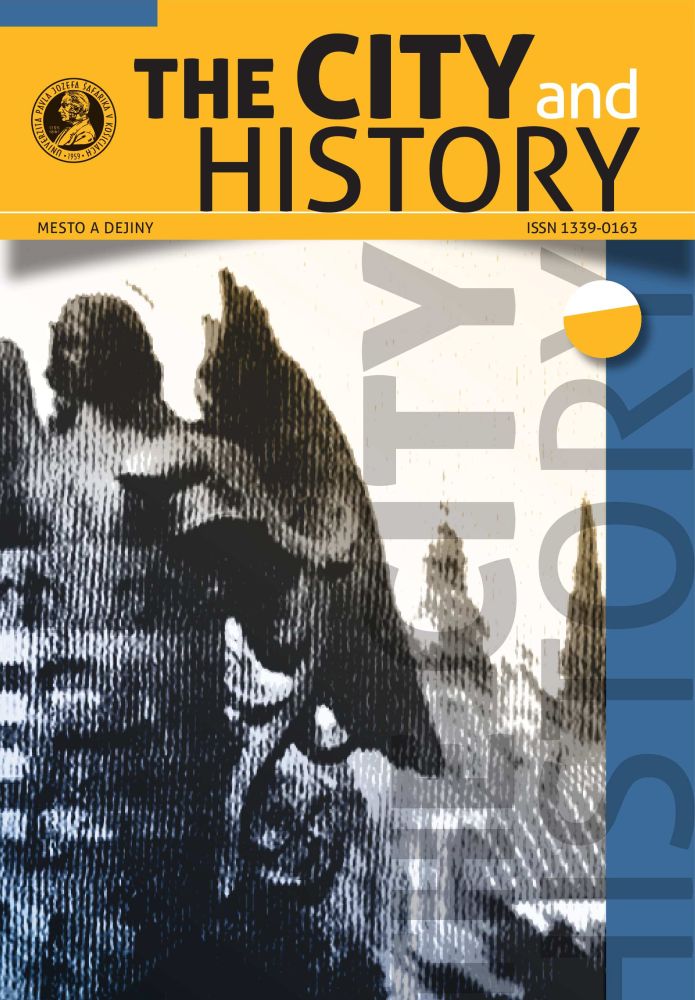
This study deals with communications between the town of Bardejov and bishops in the Middle Ages. The author examines how the ecclesiastical power and authority of the bishops was demonstrated in their communications with the royal city of Bardejov. The bishops’ power toward medieval towns in the Kingdom of Hungary was primarily manifested in the tithes and exemptions granted in the rights of archdeacons. In the case of Bardejov, there can be found some areas where the power of bishops of Eger (frequently represented by episcopal vicars) was demonstrated. First of all, the episcopal tithe collection caused permanent disputes between the parish priest, town representatives and the bishop. The author describes how the problems were solved and the machinery of episcopal powers in these cases. Another area of communication and the manifestation of episcopal authority was that of judicial cases between burghers, which were occasionally brought before ecclesiastical court contrary to town law. A further, greatly signifi cant manifestation of episcopal power in the area of the city was that of ecclesiastical rituals and symbolic communication. The study mentions various examples of episcopal presence in the consecration of churches, chapels, altars and liturgical dress.
More...